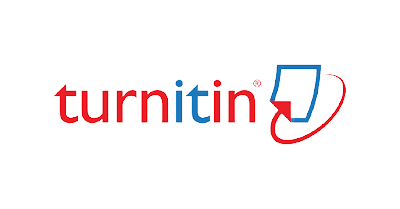TEST OF BIODIESEL FROM USED COOKING OIL FROM DORMITORY X ON OPACITY AND EXHAUST EMISSIONS HC, CO AND CO2
Abstract
The current trend is the use of biodiesel as an alternative fuel, one alternative is used cooking oil. Not many Indonesian people are aware of the great potential for utilizing used cooking oil or what is commonly called cooking oil (waste vegetable oil or WVO, also known as waste cooking oil or WCO and used cooking oil or UCO). The aim is to minimize pollution of used/used cooking oil waste in the surrounding environment as environmental conservation, to know the characteristics and quality requirements of used cooking oil/used cooking oil from dormitory X to become biodiesel according to SNI 04-7182-2015 standards, as well as the effect of blending biodiesel from cooking oil used/used cooking oil from dormitory X with PT Pertamina's Solar TBBM on opacity, performance and exhaust emissions of diesel engines. Test results for used cooking oil test criteria for smell, taste, visual color, water content, free fatty acids, acid number and peroxide value do not meet the quality standards of SNI 01-3741-2002, so they are not suitable for use or consumption again because they are toxic. The highest yield value is 81.33% and the lowest is 61.7%. Analysis of the FAME content was 98.18% and the remaining 0.72% glycerol. The highest content of methyl palmitate was 47.57% and the lowest content was 1.502% methyl myristate. Density test results were 815 – 880, viscosity were 2.3 – 6.0 cST, water content were 210,667 – 366,750, ASTM Copper Strip color test and copper blade corrosion were sequentially number 3 and class 1 A. The highest opacity value was achieved at 3000 rpm rotation . Emissions of hydrocarbons (HC) produce no HC on average. Carbon monoxide (CO) exhaust emissions produce an average of 0.05% by volume. Emission levels of CO2 in exhaust gas show an average of 0.2% by volume.
Downloads
References
Ahmad, Halid S. Bialangi, Nurhayati. Salimi, Yusdza K. (2016). Pengolahan Minyak Jelantah Menjadi Biodiesel, Inovasi Penelitian, Pendidikan dan Pembelajaran Sains, Universitas Negeri Gorontalo, Jurnal Entropi, Volume 11, Nomor 2, hal: 204 – 214, Agustus 2016;
Aziz, Isalmi. (2008). Pembuatan Biodiesel Dari Minyak Goreng Bekas Dalam Reaktor Tangki Alir Berpengaduk, Valensi, Volume 1 No. 2 Mei, 2008, hal: 100-103, DOI: 10.15408/jkv.v1i2.257
Daryono, Elvianto Dwi. Mustiadi, Lalu. (2022). Produksi Biodiesel dari Minyak Kelapa Sawit Dengan Co-Solvent Fame (Fatty Acid Methyl Esters) dan Aplikasinya pada Motor Bakar, Rekayasa Mesin, Volume. 13, No. 2, pp. 461 – 471, May, 2022, eISSN 2477-6041, artikel 16, DOI: https://doi.org/10.21776/jrm.v13i2.1056;
Elfiano, Edi. Darin, M. Natsir. Panjaitan, Ryan Hermawan. (2017). Analisa Penggunaan Bahan Bakar Pertamina Dex, Dexlite Dan Campuran Pertamina Dex Dengan Dexlite Terhadap Performance Mesin Diesel 4 Silinder. Prosiding Seminar Nasional Lembaga Penelitian Universitas Islam Riau Mitigasi Dan Strategi Adaptasi Dampak Perubahan Iklim di Indonesia, 235-240, Pekanbaru, 24-25 Februari 2017, ISBN 978-979-3793-70-2;
Fitriani, Haryanto, Agus., Triyono, Sugeng., 2016, Produksi Biodiesel dari Minyak Jelantah Melalui Transesterifikasi dengan Bantuan Gelombang Ultrasonik, Prosiding Seminar Nasional Sains Matematika Informatika dan Aplikasi IV: Inovasi Sains Matematika dan Informatika untuk Menguatkan Potensi Lokal, ISSN: 2086-2342, Vol 4 Buku 1, Fakultas MIPA Universitas Lampung;
Formo, M.W. (1997). Physical Properties Of Fast and Fatty Acid, New York;
Hardjono, A. (2000). Teknologi Minyak Bumi, Yogyakarta: Gadjah Mada University Press;
Haryono. Yuliyati. Noviyanti, Yati B. Atiek. Rizal, Mochammad. Nurjanah, Sarifah. (2020) Karakteristik Biodiesel dari Minyak Kemiri Sunan dengan Katalis Heterogen Silika Terimpregnansi Kalsium Oksida (CaO/SiO2), Jurnal Penelitian Hasil Hutan, Vol. 38 No. 1, Maret 2020, hal: 1 – 68;
Ketaren, S. (1986). Pengantar Teknologi Minyak Dan Lemak Pangan, Jakarta: UI Press; 1986;
Mas’ud, F. Muchtadi, TR. Purwiyatno, H. Tri, H., (2008). Optimization Of Deacidification Process To Minimize Destruction Of Carotenoids In Purification Of Palm Oil (Elaeis Guineensis, Jacq). Forum Pasca Sarjana 2008; Vol. 31 No. 1, hal: 25 – 30;
Nawar, WW. (1985). Lipids dalam Fennema O.R (Editor) Food Chemistry 2nd ed. New York, Basel: Marcel Dekker Inc.;
Nuri A, Sadikin YT, Winarno FG. (1997), Pengaruh Lama Penggorengan Dan Penggunaan Adsorben Terhadap Mutu Minyak Goreng Bekas Penggorengan Tahu-Tempe, Buletin Teknologi dan Industri Pangan 1997; Vol 8, No. 1, hal: 41-45;
Pakpahan, JF. Tambunan, T. Ritonga, MY. (2013). Pengaruh Free Fatty Acid Dan Warna Dari Minyak Jelantah Dengan Adsorben Serabut Kelapa Dan Jerami. Jurnal Teknik Kimia USU 2013; Vol 2 No. 1, hal: 31 – 36;
Peraturan Menteri Lingkungan Hidup dan Kehutanan Nomor 20 Tahun 2017 tentang Baku Mutu Emisi Gas Buang Kendaraan Bermotor Tipe Baru Kategori M, N dan O;
Pratiwi, Niken. Masriani. Prihatiningtyas, Indah. (2016). Perbandingan Proses Esterifikasi dan Esterifikasi -Trans-esterifikasi dalam Pembuatan Biodisel dari Minyak Jelantah, Prosiding Seminar Nasional Teknik Kimia “Kejuangan”, Pengembangan Teknologi Kimia untuk Pengolahan Sumber Daya Alam Indonesia, Program Studi Teknik Kimia, FTI, UPN “Veteran” Yogyakarta, Yogyakarta, 17 Maret 2016, hal: 1 – 6, ISSN 1693-4393;
Rosdiyanti, Cici. Kaharmen, Herman Mariadi. (2020). Pengaruh Penggunaan Jenis Bahan Bakar Solar B20, Dexlite B20 Dan Pertamina Dex Terhadap Opasitas, Daya Dan Konsumsi Bahan Bakar pada Innova Diesel Common Rail, Politeknik Keselamatan Transportasi Jalan, Jurnal Keselamatan Transportasi Jalan, Volume 7 No. 1, hal: 76 – 82, Juni 2020, e-ISSN 2721-7248;
Sari, Reka M. Kembaren, Agus. (2019). Pemanfaatan Karbon Aktif Ampas dalam Mereduksi Asam Lemak Bebas (Free Fatty Acid) pada Minyak Goreng Bekas sebagai Biodiesel, Seminar Nasional Kimia dan Pendidikan Kimia 2018, TALENTA Conference Series: Science & Technology (ST), Volume 2 Issue 1 – 2018, hal: 124 – 128, DOI: 10.32734/st.v2i1.329;
Setyadji, Moch. Susiantini, Endang. (2007). Pengaruh Penambahan Biodiesel dari Minyak Jelantah pada Solar Terhadap Opasitas dan Emisi Gas Buang CO. CO2 dan HC, Prosiding PPI – PDIPTN 2007, Pustek Akselerator dan Proses Bahan – Batan, Yogyakarta, 10 Juli 2007, hal: 190 – 200;
Siti, NW. Kuntanti,Tri Dewanti W. (2001). Studi Tingkat Kerusakan Dan Keamanan Pangan Minyak Goreng Bekas (Kajian dari perbedaan jenis minyak goreng dan bahan pangan yang digoreng), Laporan Penelitian, Fakultas Teknologi Pertanian Universitas Brawijaya Malang; 2001;
Soerawidjaja, T. H. (2002). Menjadikan Biodisel Sebagai Bagian Dari Liquor Fuel Mix Di Indonesia. Materi Presentasi pada Rapat Teknis Penelitian Energi ke 311. Pusat Penelitian Material dan Energi. ITB. Bandung;
Soerawidjaja, Tatang H, 2002, Mengapa Indonesia Perlu Mengembangkan dan Menggunakan Biodiesel?, Pusat Penelitian Material dan Energi – Lembaga Penelitian dan Pemberdayaan Masyarakat Institut Teknologi Bandung, Oktober 2002;
Suroso, Asri Sulistijowati. (2013). Kualitas Minyak Goreng Habis Pakai Ditinjau dari Bilangan Peroksida, Bilangan Asam dan Kadar Air, Jurnal Kefarmasian Indonesia. Vol. 3, No. 2,: hal: 77 – 88, Agustus, 2013;
Suyanto, Wardan. Siswanto, Budi Tri. Wakid, Muhkamad. (2015), Karakterisasi Bahan Bakar Pada Motor Diesel, Jurnal Penelitian Saintek, Vol. 20, Nomor 1, April 2015, hal: 29 – 44;
Syaiful. Budiman, Arif. (2011). Karakteristik Emisi Jelaga Mesin Diesel Menggunakan Venturi Scrubber Egr dengan Bahan Bakar Solar, Jurnal Teknik Mesin Universitas Diponegoro Semarang, ROTASI – Vol. 13, No. 4, Oktober 2011, hal: 24-28;
Telaoembanoea, Fatolosa. (2016). Penelitian Kandungan Gas Buang Beracun Pada Mesin Diesel 2500 cc yang Menggunakan Bahan Bakar Solar Dan Bahan Bakar Biosolar. Universitas Dharmawangsa, Jurnal Warta Edisi : 50, Oktober 2016, DOI: https://doi.org/10.46576/wdw.v0i50.202;
Trambouze, P., Landeghem, H.V., and Wauquier, J.P., (1988), Chemical Reactor Design / Engineering / Operator, pp. 241-244, France: Imprimerie Nouvelle;
Ula, Shofiatul. Kurniadi, Waspada. (2017). Studi Kelayakan Produksi Biodiesel Dari Minyak Jelantah Skala Industri Kecil, Al Jazari Journal of Mechanical Engineering 2 Vol. 2, 2017, hal: 1 – 7, ISSN: 2527-3426;
Widayat. Hadiyanto. Putra, D.A. Nursafitri, I. Satriadi, H. Prameswari, J. (2020). Waste Cooking Oil Processing For Fatty Acid Methyl Ester And Mono Glycerides Production With Magnetite Catalyst, Food Research 4 (Suppl. 1) pp: 220 – 226, eISSN: 2550-2166, January, 2020 (https://doi.org/10.26656/fr.2017.4(S1).S29);
Yudha, Rakhmad Faizal. Setiawan, Adhi. Mayangsari, Novi Eka. (2018). Identifikasi Komponen FAME (Fatty Acid Methyl Ester) pada Biodiesel yang Disintesis dari Minyak Goreng Bekas, Program Studi D4 Teknik Pengolahan Limbah – Politeknik Perkapalan Negeri Surabaya, Conference Proceeding on Waste Treatment Technology, Vol. 1, September 2018, hal: 91 – 96, ISSN No. 2623 – 1727;
Copyright (c) 2023 Budi Sulistiyo Nugroho, Silvya Yusnica Agnesty, Haris Numan Aulia, Heni Fidyaningrum

This work is licensed under a Creative Commons Attribution-ShareAlike 4.0 International License.
Jurnal allows anyone to compose, correct, and do derivative works, even for commercial purposes, as long as they credit for the original work. This license is the freest. It is recommended for maximum distribution and use of licensed material.
The submitted paper is assumed not to contain any proprietary materials that are not protected by patent rights or patent applications; The responsibility for technical content and protection of proprietary materials rests with the authors and their organizations and not the responsibility of journal or its editorial staff. The primary (first/appropriate) author is responsible for ensuring that the article has been viewed and approved by all other authors. The author's responsibility is to obtain all necessary copyright waivers to use any copyrighted material in the manuscript before submission.
Jurnal Pendidikan, Sains dan Teknologi allows the author(s) to hold the copyright without restrictions and allow the author(s) to retain publishing rights without restrictions. Jurnal Pendidikan, Sains dan Teknologi CC-BY-SA or an equivalent license as the optimal license for the publication, distribution, use, and reuse of scholarly work. Jurnal Pendidikan, Sains dan Teknologi allows the author(s) to hold the copyright without restrictions and allow the author(s) to retain publishing rights without restrictions. Jurnal Pendidikan, Sains dan Teknologi CC-BY-SA or an equivalent license as the optimal license for the publication, distribution, use, and reuse of scholarly work.
In developing strategy and setting priorities Jurnal Pendidikan, Sains dan Teknologi recognize that free access is better than priced access, libre access is better than free access, and libre under CC-BY-SA or the equivalent is better than libre under more restrictive open licenses. We should achieve what we can when we can. We should not delay achieving free in order to achieve libre, and we should not stop with free when we can achieve libre.
Jurnal Pendidikan, Sains dan Teknologi is licensed under a Creative Commons Attribution-ShareAlike 4.0 International License.
You are free to:
- Share a copy and redistribute the material in any medium or format
- Adapt a remix, transform, and build upon the material for any purpose, even commercially.
- The licensor cannot revoke these freedoms as long as you follow the license terms.






